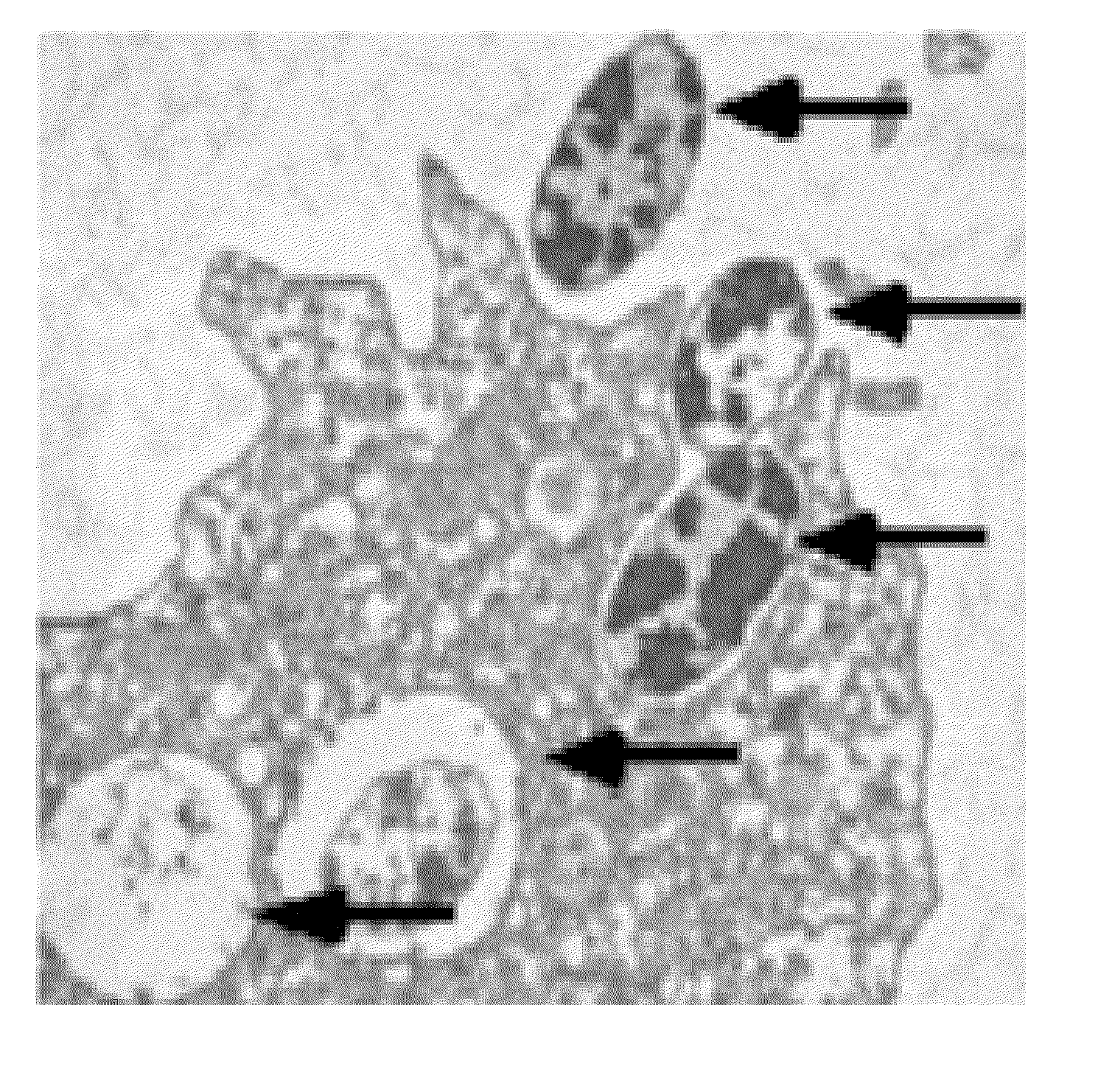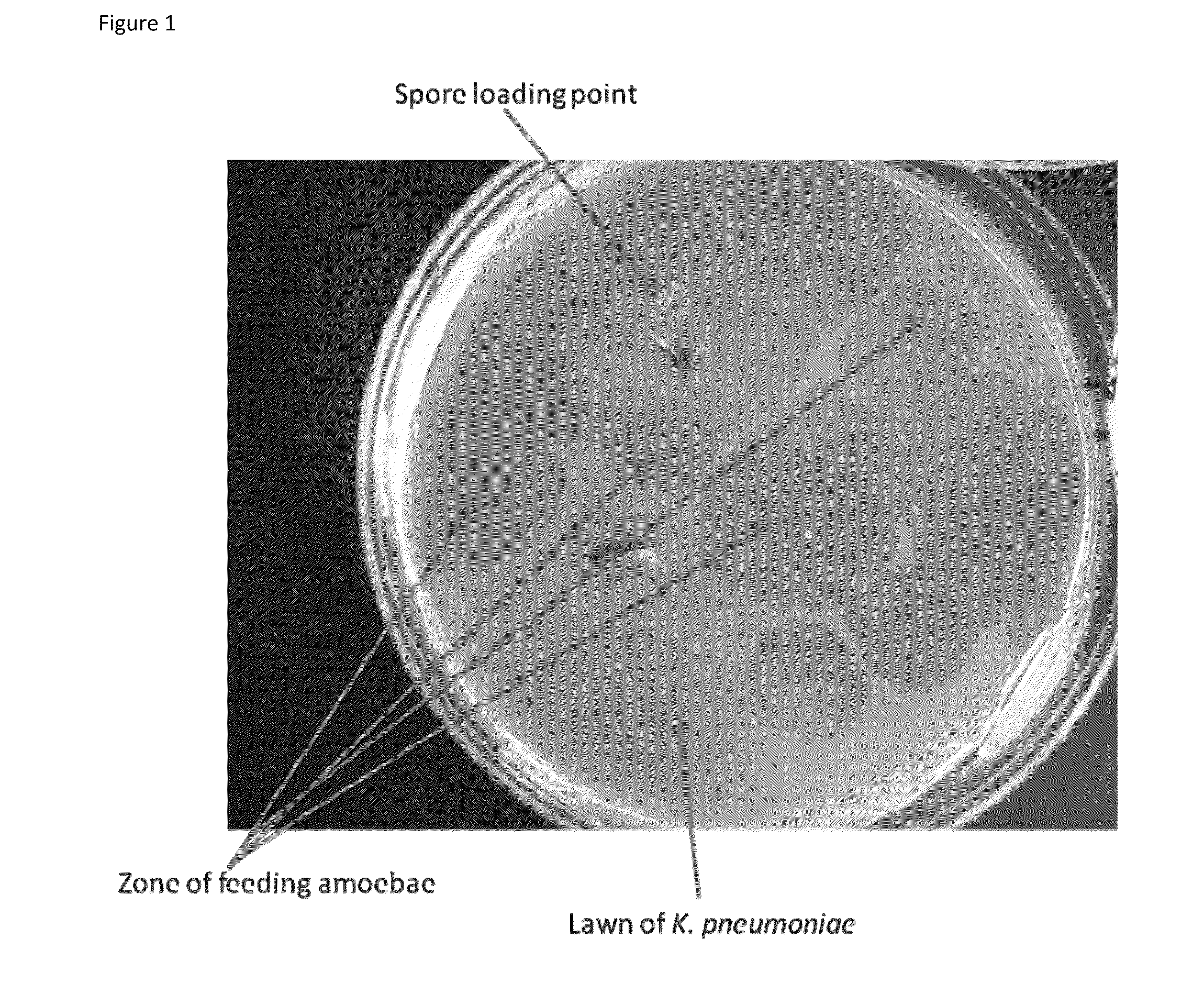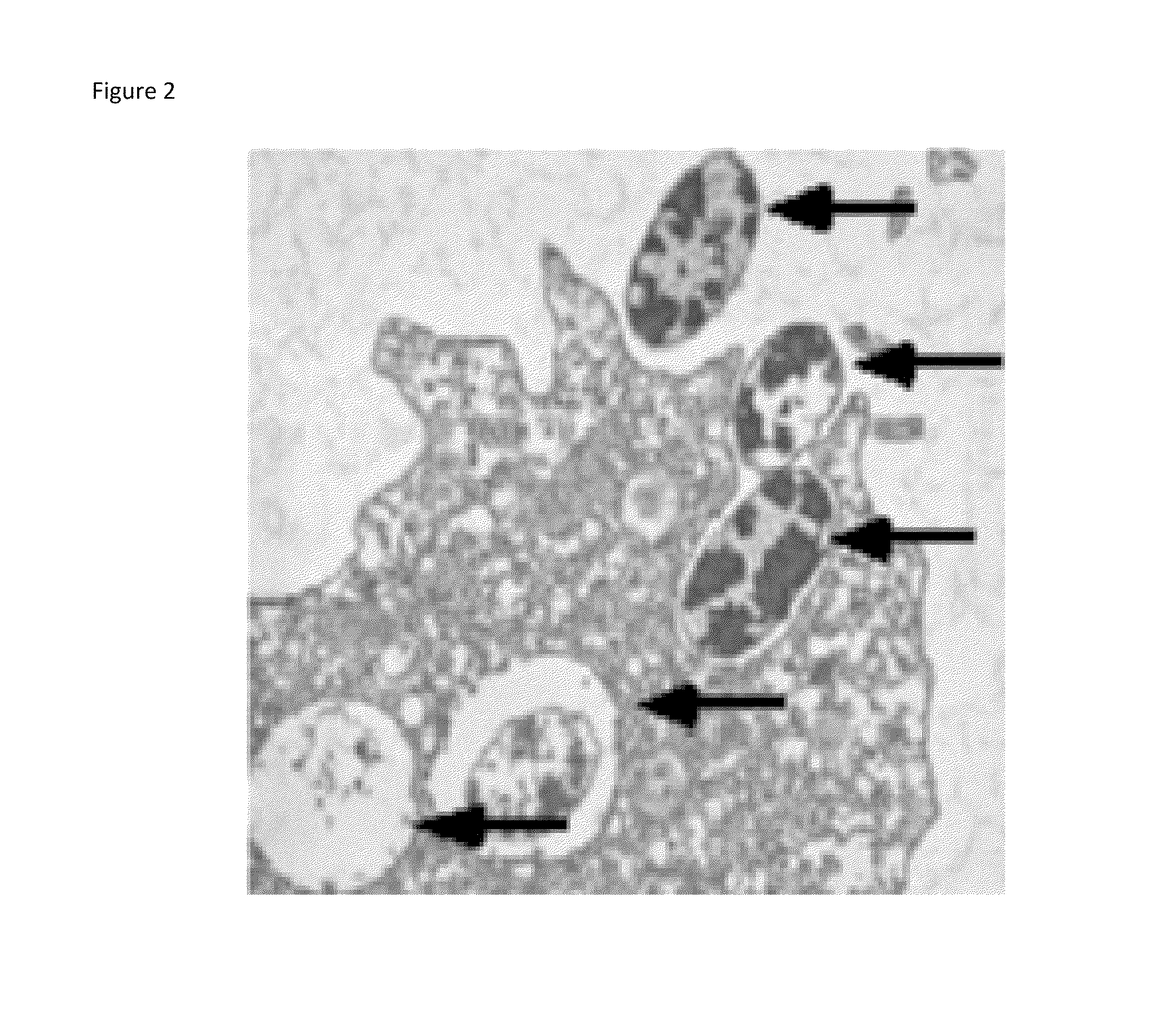Therapeutic amoeba and uses thereof
a technology of amoeba and amoeba, which is applied in the field of amoebae (slime molds), can solve the problems of less efficacy of drugs than their predecessors, more side effects, and render what were once considered miracle cures ineffectiv
- Summary
- Abstract
- Description
- Claims
- Application Information
AI Technical Summary
Problems solved by technology
Method used
Image
Examples
example 1
Methods
The idea of amoebic therapy is unorthodox. Various publications report the typical growth conditions for amoebae isolates: solid media composed of natural product extracts, soil bacteria (food source), and 22° C. incubation at atmospheric oxygen (Raper K B, Rahn A W. (1984) The Dictyostelids). In some embodiments, wounded tissue is at an elevated temperature (Ring E F J. 1986). Bioeng Skin 2(1): 15-30; Forage A V. (1964) Br J Plast Surg 17: 60-1; McGuiness W, Vella E, Harrison D. (2004) J Wound Care 13(9): 383-5) or hypoxic (Mathieu D. (2006) Int J Low Extrem Wounds 5(4): 233-5) or it may contain serum components that neutralize the amoebae (Ferrante A. (1991) Parasite Immunol 13(1): 31-47). Wound conditions are somewhat ill-defined and most likely vary with the type of wound. In such embodiments, culture conditions and choice of amoebae are optimized to match the intended use. In early studies that investigated the ability of D. discoideum to consume different bacteria, only...
example 2
Pairwise employment of more than one strain of amoebae
This example describes the used of two or more types of amoebae to assure that the treated surface / tissue becomes microorganism-free (other than the presence of amoebae themselves, or their various social stages of development; e.g. slugs or sorocarps). Relevant to that, intra- and inter-species chemical communications among amoebae are considered and tested to choose right (compatible) partners. As shown in FIG. 5, some amoebae isolates (e.g., Salvador, and WS647 or WI321.7 and WS142) seem totally unaware of each other's presence as evidenced by the overlapping clearing zones they produce. Therefore, their combination is suitable for use in a biotherapeutic cocktail of amoebae. Other amoebae isolates show a very strong antagonistic behavior (e.g. WS255 x281 and WS647 or WS321.5 and either FR14 or WS142) as evidenced by the non-overlapping clearing zones they produce.
example 3
Growth Temperature
In general, amoebae are propagated at a temperature between 21-25° C. (Raper K B. (1951) Q Rev Biol 26(2): 169-90; Raper K B, Rahn A W. (1984) The Dictyostelids). Temperatures above 25° C. can inhibit the growth of many species of amoebae. Such species can be employed in many, perhaps all agricultural applications (e.g., against E. amylovora or P. syringiae). Although dermatological wounds typically have comparable surface temperatures (between 24-26° C.), they can measure 35° C. or higher (Ring E F J. (1986) Bioeng Skin 2(1): 15-30; Forage A V. (1964) Br J Plast Surg 17: 60-1; McGuiness W, Vella E, Harrison D. (2004) J Wound Care 13(9): 383-5). In published reports, the determination of growth temperatures relied on observing fruiting body formation, not the ability of free-living amoeba to feed on bacteria. Experiments were performed to determine if the observed temperature restriction affects bacteria-consuming amoebae or a developmental step in sorocarp formati...
PUM
 Login to View More
Login to View More Abstract
Description
Claims
Application Information
 Login to View More
Login to View More - R&D
- Intellectual Property
- Life Sciences
- Materials
- Tech Scout
- Unparalleled Data Quality
- Higher Quality Content
- 60% Fewer Hallucinations
Browse by: Latest US Patents, China's latest patents, Technical Efficacy Thesaurus, Application Domain, Technology Topic, Popular Technical Reports.
© 2025 PatSnap. All rights reserved.Legal|Privacy policy|Modern Slavery Act Transparency Statement|Sitemap|About US| Contact US: help@patsnap.com



